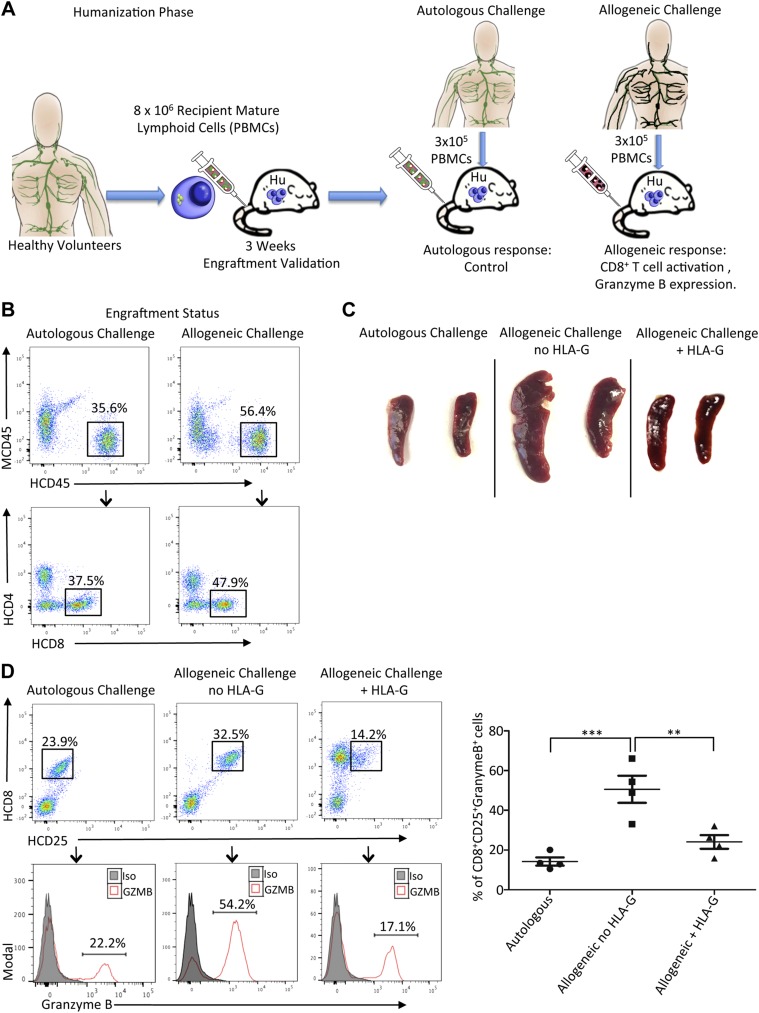Figure 8.
HLA-G dimer inhibits activation of CD8+ T cells and GZMB expression in a humanized mouse model of allogeneic recognition. A) Experimental design schematic showing the humanization of NSG mouse with HV PBMCs followed by the challenge phase with autologous or allogeneic PBMCs. B) The phenotype of engrafted human T cells in the humanized mouse generated for the challenge conditions was determined on the basis of human CD45 expression (HCD45) and negative staining with anti-murine CD45 mAb (MCD45). Representative flow cytometry dot plots from the humanized mouse for the indicated groups (n = 4 mice/group) showing a population of human CD45 cells with further gating to show HCD8+ T cells at the third week of engraftment. C) Spleens isolated from the different groups show significant splenomegaly with allogeneic challenge, which is minimized with HLA-G treatment. D) Representative flow cytometry dot plots from spleen of humanized mouse shows a population of human activated CD8+ CD25+ T cells after allogeneic challenge with or without HLA-G treatment. Autologous challenge serves as control. Histograms depict GZMB expression of activated CD8+ CD25+ T cells (red line). Filled histogram shows the isotype control (Iso). Graphical summary shows the frequency (%) of CD8+ CD25+ GZMB+ cells per group. Data presented as means ± sd. **P < 0.01, ***P < 0.001.

